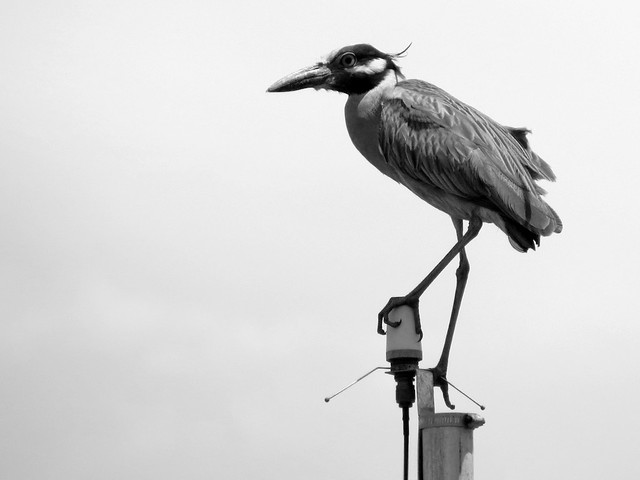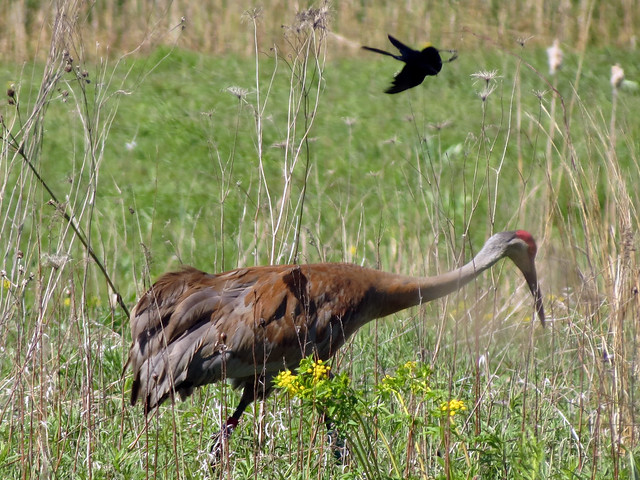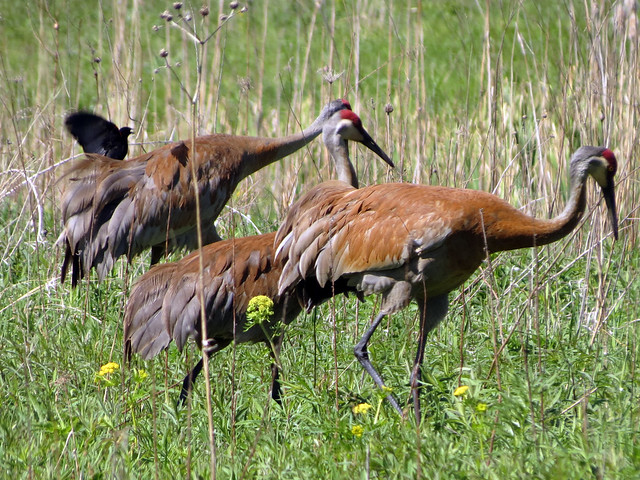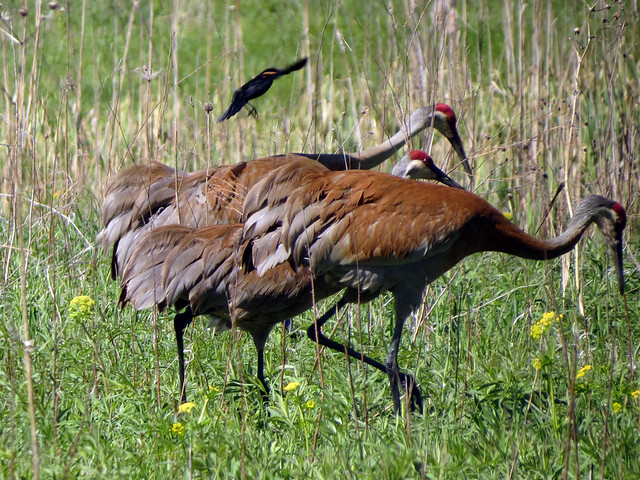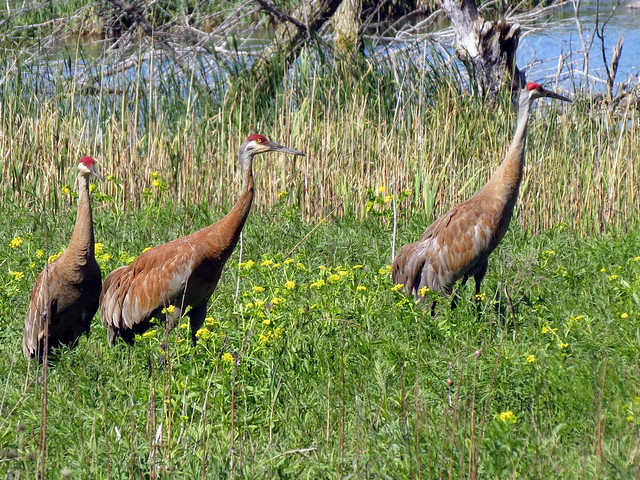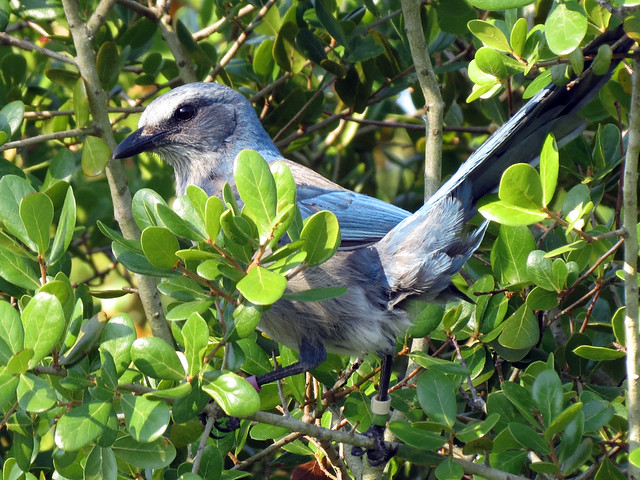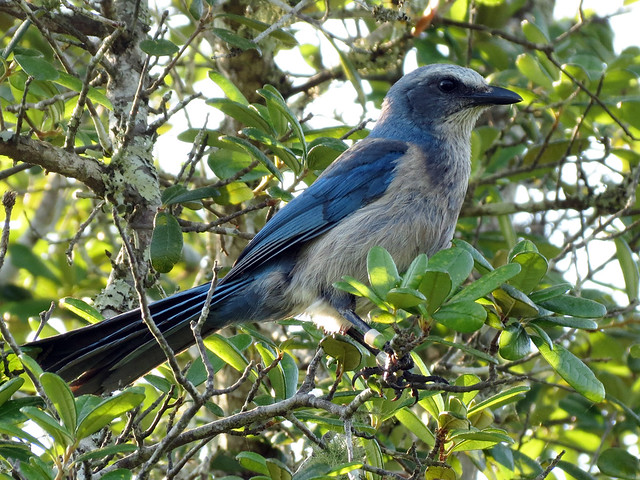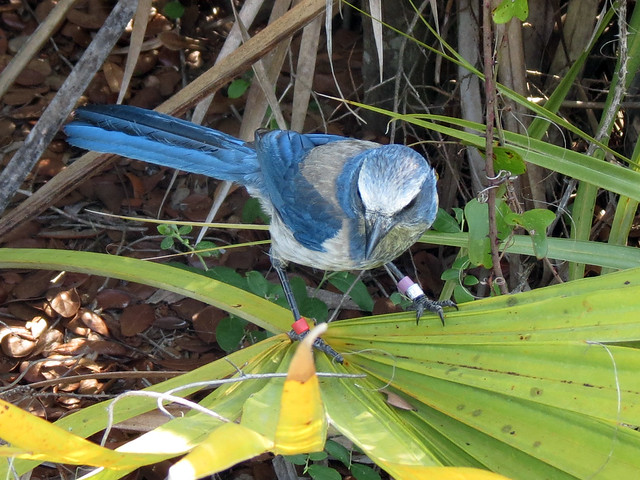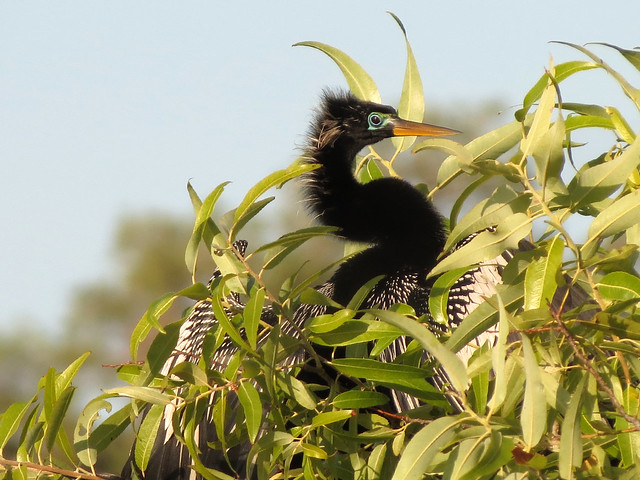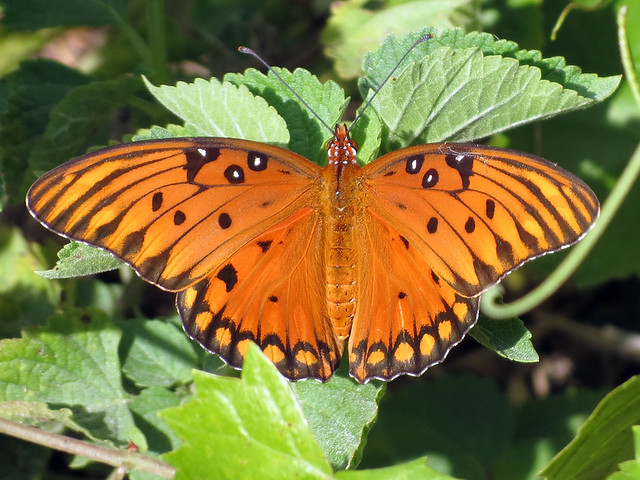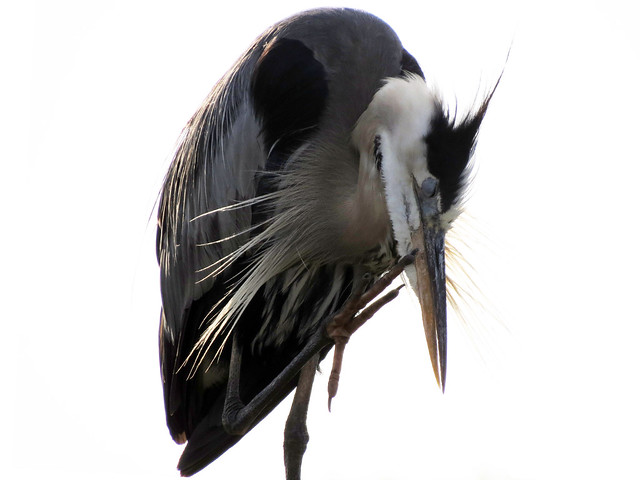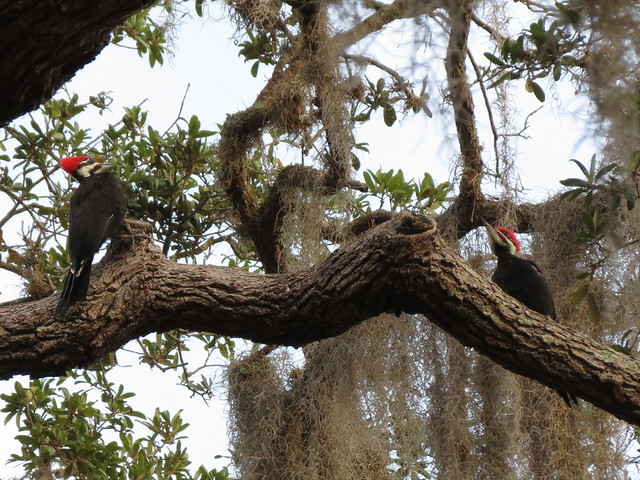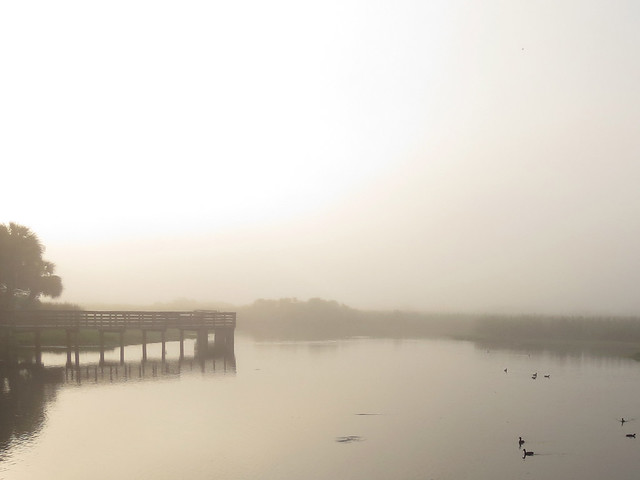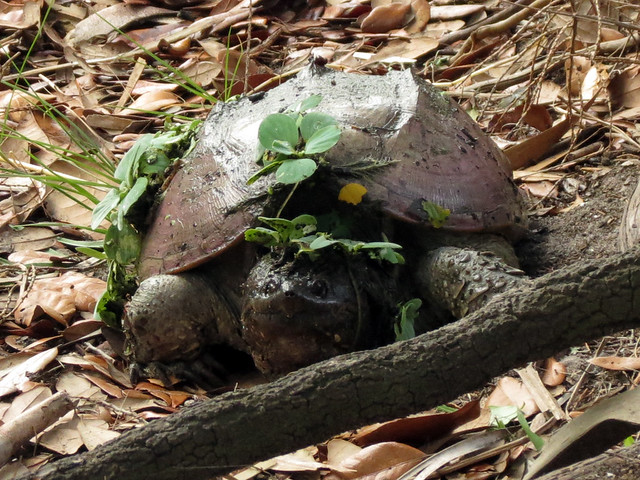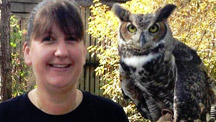Crab hunting at Spruce Creek
Late last month, Arthur and I visited Spruce Creek Park in Port Orange. It was hot and birds were keeping a low profile. Once we climbed up the 15-foot observation tower we had a very nice view over the property. I spotted a heron sitting on a picnic table below us, and did a double-take when I realized it was a Yellow-crowned Night-Heron.

The bird hopped off the table and proceeded to successfully hunt a large amount of crabs in the mud.
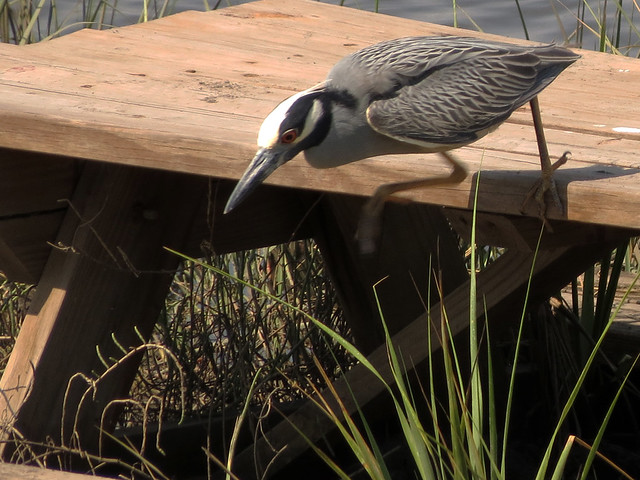
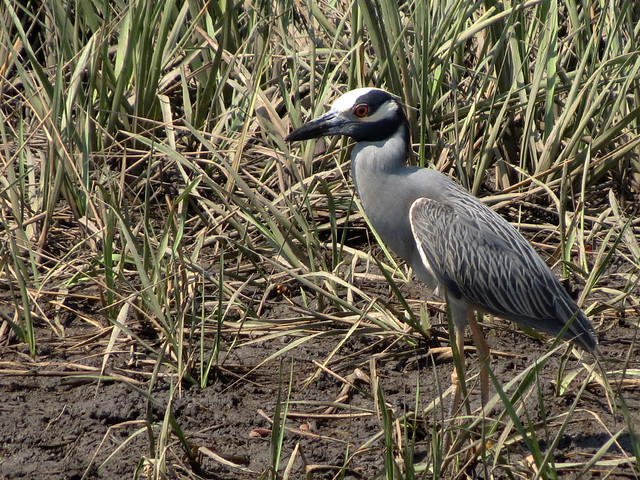
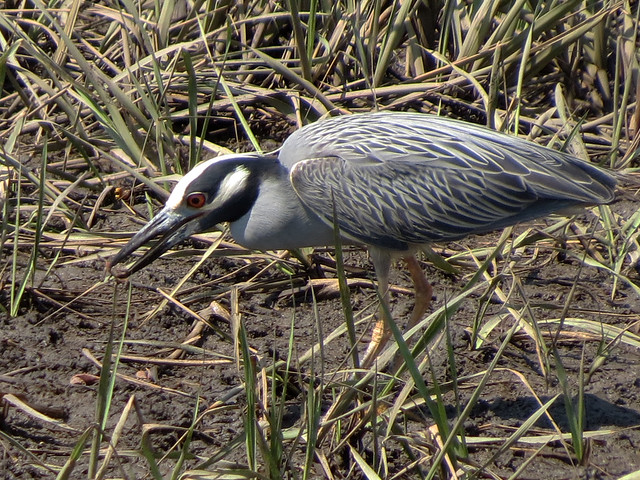
Timestamps on my photos tell me we watched the heron hunting for about a half hour, and I would guess it caught and ate a crab or other tasty morsel at least every two minutes.


We climbed down the tower and proceeded with our hot mid-morning walk. Later we came across another YCNH, this one awkwardly perched on top of some kind of weather apparatus (I think). It didn’t stay perched long.
